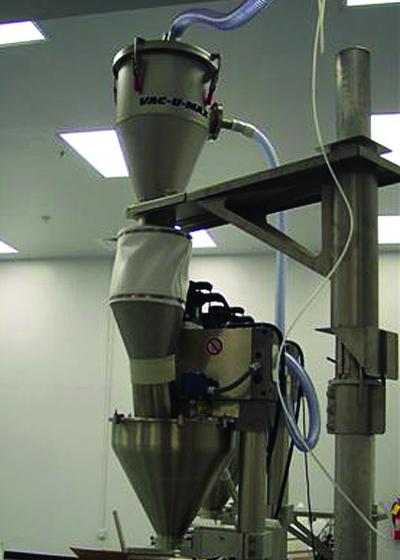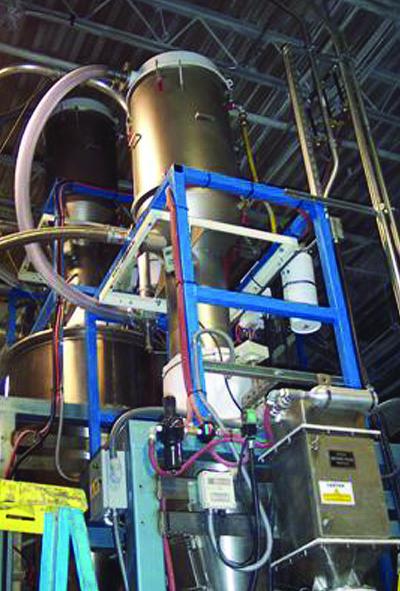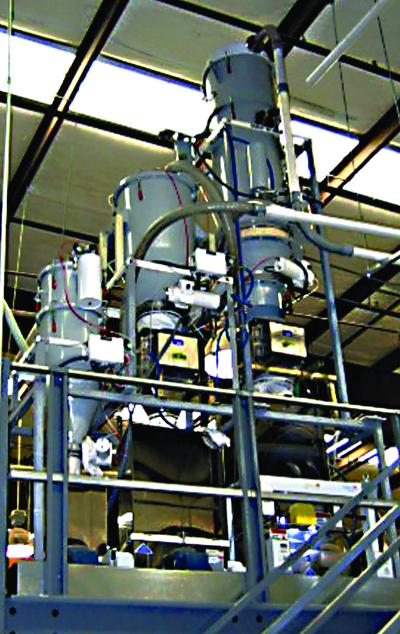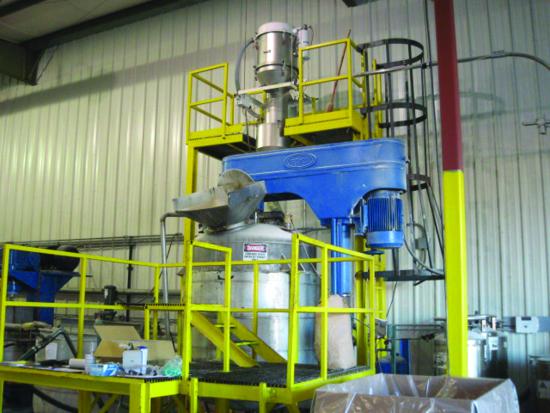In choosing a system for the safe, clean conveyance of materials, it seems that the choices can be remarkably complex. Prior to such a choice, a facility is usually operating with, live personnel, open conveyor belts and implements such as buckets. While employees may be protected by proper clothing, masks and goggles, materials are exposed to air and dirt, waste is a constant worry, and expensive equipment is endangered by particulates that can slow or jam it. In today’s operating environment with its constant economic pressures and forced attention on the bottom line, it then becomes mandatory for companies to seek alternatives and improvements such as pneumatic conveying systems. It seems so simple.
Why, then, when having to confront all the possible options for such a system, does it appear to require an engineering degree? And even those folks are going to have a hard time when posed with questions such as, should the system be dilute phase or dense phase? Should the system be vacuum, pressure or combination? Given the physical properties of your materials, how exactly will they be best conveyed? What is the friction factor of your solids? How do you calculate the expected losses of pressure throughout the system? Given that oxygen doesn’t mix well with some chemicals, what gas should you utilize? It even gets worse when you find you have to figure in factors such as solids velocities in horizontal, diagonal and vertical pipe runs and gas densities.
Okay, Hold Up!
Let’s take a deep breath, a giant step back, and remember our original reasons for wanting to do this in the first place. The reasons are relatively simple and, fortunately, so are the choices involved.
In evaluating a pneumatic conveying system, a company wants to be convinced of 3 basic pieces of information:
1. Is the system going to truly automate a process?
If a particular process now involves 5 personnel, can most or all of those personnel actually be eliminated from the process and assigned elsewhere? Will it actually be possible to run that process with little to no further attention, save perhaps periodic monitoring?
2. Is the system really reliable?
Will the system run 24X7 without babysitting? Will it stand up to the required process; is it robust and seriously proofed against breaking down? How much maintenance will it require?
3. What is the actual cost of the system?
The overall price of a system is only the beginning of such a question. How quickly would the system pay for itself? How much actual time and cost will be saved by its implementation?
These questions each tie into one other, and each and all must be answered in detail. Fortunately, if reliable expert assistance is sought, that first set of horribly niggly engineering-type questions need not be solved by a facility, and the important questions as above can be answered fully by an outside expert and to a facility’s satisfaction.
An understanding of material characteristics is essential when designing a vacuum transfer system—experts often already possess data about a particular substance’s behavior and will test within a proposed configuration to ensure it will work properly. This knowledge must, by necessity, be extensive; for example, there are often several product grades within the same product group and those forms may have completely different characteristics such as free flowing, sluggish or non-free flowing. One grade of Zinc Oxide may have the consistency of talc, while another might be more cohesive and adhere to inside surfaces of conveying tubes.
Experts in pneumatic conveying solutions, such as Vac-U-Max, an early pioneer of vacuum technology, are skilled in designing proper solutions based on application specific needs. Rather than trying to dazzle you with the complexity of the technology, a pneumatic conveying company who routinely designs and builds custom pneumatic conveying solutions will most likely have an idea of how to tailor a system to meet present and future needs and will be able to provide solutions that work properly out of the box in the facility.
VAC-U-MAX has large-scale testing facilities at its New Jersey headquarters where tests are performed to confirm material flowability and the required convey rate for materials specific to end user applications.

An understanding of material characteristics is essential when designing a vacuum transfer system-experts, like VAC-U-MAX, often already possess data about a particular substance's behavior and will test within a proposed configuration to ensure it will work properly.
Individual Cost-Saving Benefits
Implementing the correct pneumatic conveying system—or correctly expanding an existing system—yields numerous benefits, and when working with a company that has experience in solving a wide range of problems, switching to pneumatic conveying system is a simple solution that yields amazing cost benefits.
Clean Up
The right system means reduced or eliminated cleanup. Because the system is fully enclosed, problems with particles escaping and messy accidents are eliminated and so is the labor-intensive cleanup from floors and surfaces, and unnecessary cleaning of machinery. A fully enclosed system also translates to a healthier work environment because it reduces or eliminates worker exposure to hazardous substances and deadly dust that can cause explosions.
Although engineers on the plant floor do everything, they can to protect workers, such as using extensive exhaust ducting and respiratory protection for the workers in the area, they often continue to search for a better solution.
One such company worked with a pneumatic conveying expert and found an alternative to manually dumping 50 pound bags of toxic material into a mixer on the plant floor. The solution was to use a monorail-mounted hoist to lift and position semibulk bags to an unloader which formed a dust-tight seal against the ring on the discharge opening. Agitator pads and an auger under the storage bin were used to deliver material at a controlled rate into a weigh hopper on the floor below, and then conveyed to a blender on an upper floor which enclosed the material path entirely.
Pneumatic systems, like this one by VAC-U-MAX, convey material from closed hoppers through closed lines and requires little to no intervention.
Reclamation
In many industries product reclamation is an important aspect in reducing costs. From fine powdery substances to larger particles such as plastic pellets, pneumatic experts know how to achieve minimal waste.
In one example involving the manufacture of marshmallows, bucket-elevator type systems had been being used which just threw starch around. Outside of the need for bi-weekly cleaning, the company was also wasting substantial quantities of a valuable ingredient in the process.
The solution was to install vibratory pans within a pneumatic conveying system that shake loose excess starch from the marshmallows as they exit cooling drums. The starch goes through filter separators and is recycled back to manufacturing for reuse. The safe, enclosed system reclaims about 1,000 pounds of starch a day and reduces product loss by up to 2 percent.

Downtime is one of the worst enemies of a manufacturing facility and immediately impacts revenue. Because pneumatic conveying systems, like this VAC-U-MAX system, have few moving parts there is virtually no maintenance or cleaning necessary.
Streamlined Production
Often companies seek out pneumatic conveying solutions to improve production because the material moves quicker and there is less room for error. This is especially true with processes that are operated with open conveying systems and containers that need to be moved, filled and emptied by personnel. Pneumatic systems convey material from closed hoppers through closed lines and requires little to no intervention.
Since labor is one of the highest costs in a plant or facility, reducing man-hours becomes a prime target of any executive interested in reducing operating cost. A prime benefit of a pneumatic conveying system should be the reduction of man-hours. Where numerous staff were previously required to manipulate material, there might now be the need for only one to add material at the front end of the process.
One company knew they needed to make dramatic changes in order to assure their future and compete with major players. Their human-assisted blending process had severe limitations, costing the company 20 minutes to blend 1.5 tons of product. With pneumatic conveying, that same output was able to be completed in 20 seconds—a 60-fold improvement. With the money saved implementing more cost-effective operations, the company was able to invest the cost savings into additional R&D, marketing and sales staff.

Experts in pneumatic conveying solutions, such as VAC-U-MAX, an early pioneer of vacuum technology, are skilled in designing proper solutions based on application specific needs.
Reduced Maintenance
Downtime is one of the worst enemies of a manufacturing facility and immediately impacts revenue. In addition to reduced or eliminated downtime for maintenance, downtime for cleaning is also considerably decreased with pneumatic conveying systems.
A particular facility found that there was virtually no maintenance or cleaning necessary in pneumatic conveying systems because they have few moving parts. They were able to simply clean or swap out hoses and check the motor and oil twice a year. Approximately 30 hours of production per year was added.

Since labor is one of the highest costs in a plant or facility, reducing man-hours becomes a prime target of any executive interested in reducing operating cost. A prime benefit of a pneumatic conveying system should be the reduction of man-hours. Where numerous staff were previously required to manipulate material, there might now be the need for only one to add material at the front end of the process.
Adaptability
Of course, a system should be tailored to the specific material being utilized within the process—and if needed, the system should be able to accommodate different materials if more than one process will be being performed on a line at different times or have the ability to adjust based on the volume of production necessary for specific runs.
For example, one company utilized a pneumatic conveying dump station to feed ingredients to blenders for smaller and normal size orders. But for higher volume products such as snack-food coatings and flour, they pneumatically loaded blenders directly from silos at an even greater rate of speed.
There are even cases when a system must be mobile so that it can be moved to a different location within a plant. If this is a needed requirement, it can and should be accommodated.
Pneumatic conveying systems can be utilized for virtually any material and application, including conveying water treatment chemicals.
Keep Your Eye on the Prize
The entire goal of pneumatic conveying systems is to automate operations and make them more cost-effective; in effect, to simplify processes. Less complexity equals less downtime, reduced man-hours and reduced overall cost. There should not be added complexity in evaluating and choosing such a system. With expert guidance such as that from Vac-U-Max, a company should be able to follow the evaluation elements as roughly laid out above and stick to them—and thereby attain them.
For more information about VAC-U-MAX pneumatic material handling or industrial vacuum cleaning solutions, write to them at William Street, Belleville, NJ 07109; call (888)241-6992 or (973) 759-4600; e-mail info@vac-u-max.com; or visit their website www.vac-u-max.com.
Bruce Boyers is a freelance writer based in Glendale, California.
For similar articles on Industrial Vacuum Conveying Technology, visit https://www.blowervacuumbestpractices.com/industries/conveying.
Visit our Webinar Archives to listen to expert presentations on Industrial Vacuum Technology at https://www.blowervacuumbestpractices.com/magazine/webinars.



